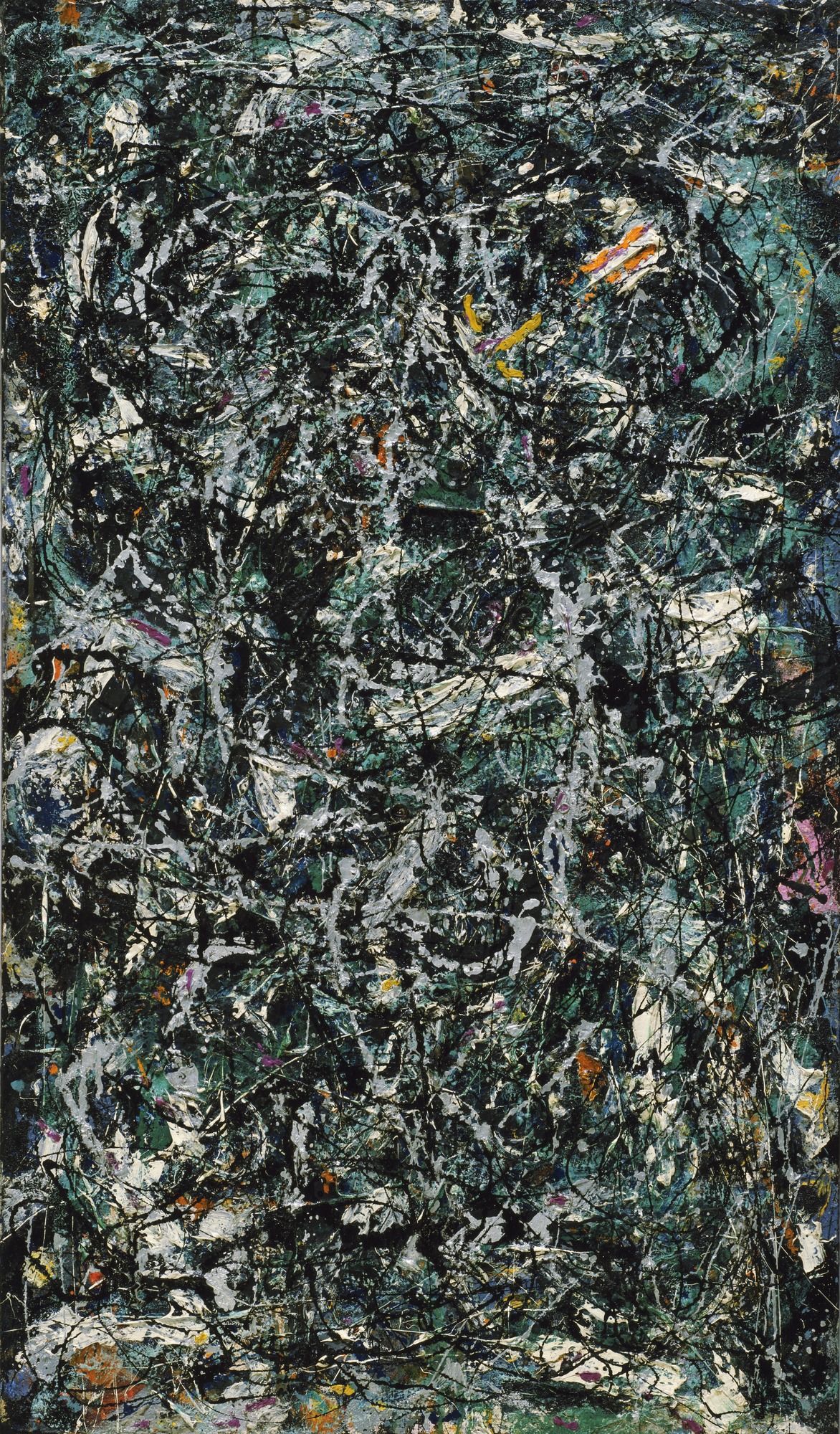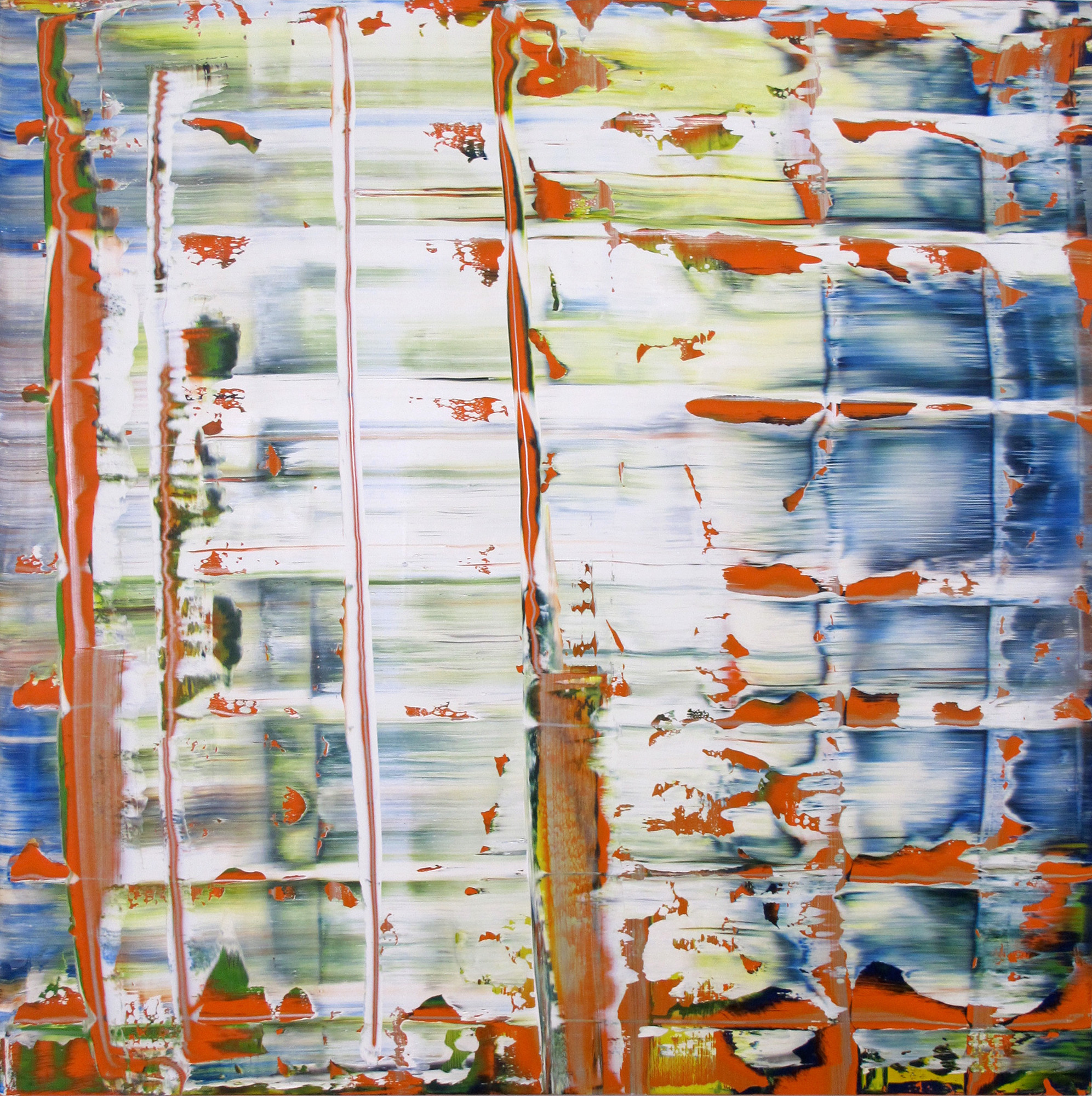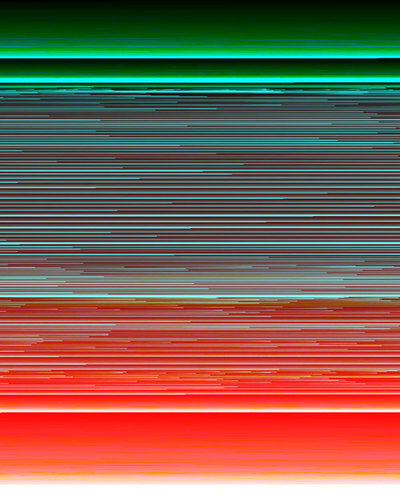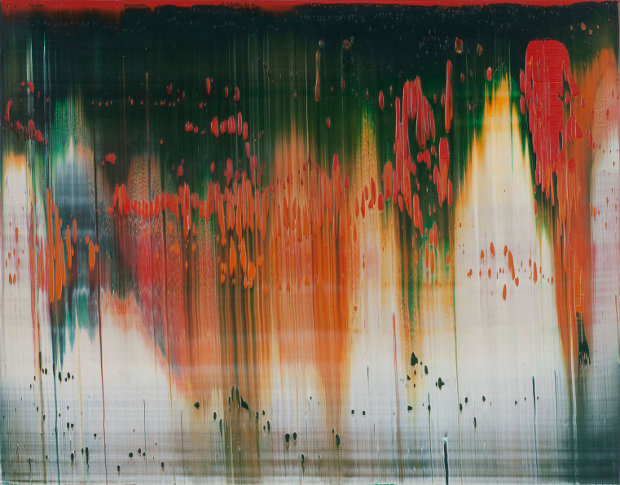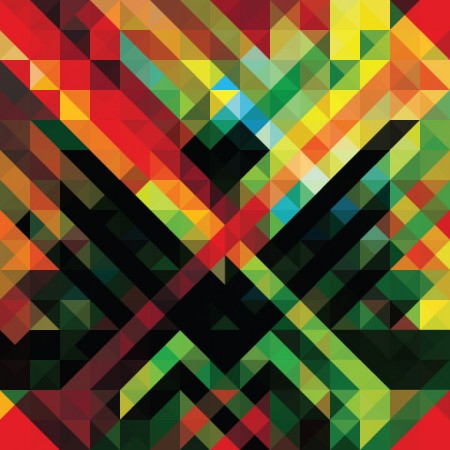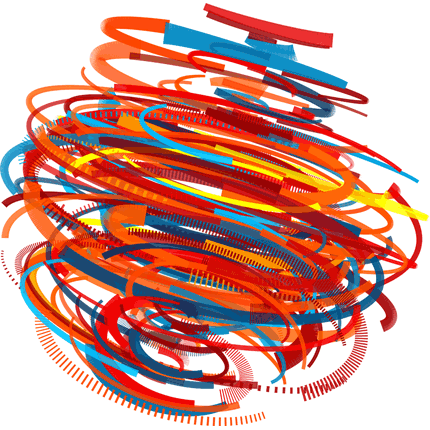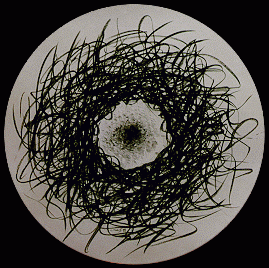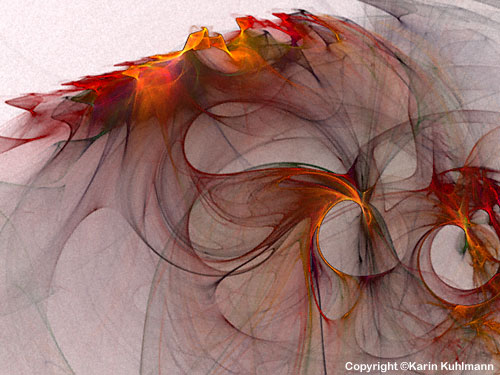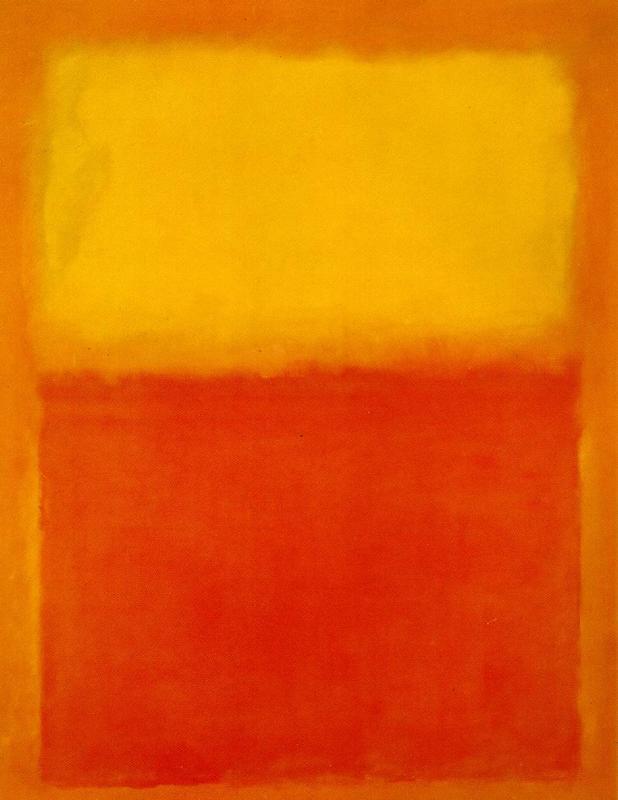Project Description
For this project students will create three wholly abstract digital artworks that capture the visual essence of short music fragments. This project challenges the student to invent a visual that represents the sounds, the harmonies, the notes, the rythyms of a given piece of music. The music is provided by the instructor. The student's task is to listen carefully and create an abstract digital artwork that communicates the effect of the music to the whole class. You are each going to become synesthetes, at least for a little while.Carefully consider the composition. Music is dynamic and your artwork should be too. Fill up the entire space, even pauses and silence have a color. BTW, did you notice that composition, the term used to describe the arrangement of marks, shapes, colors, of an artwork, is the same term used to describe how one writes down the sounds in music, which is the arrangement, pattern, repetition, of notes on a sheet of paper.
A major challenge for many will be the fact that they cannot use recognizable imagery. It is not uncommon for artists and designers to lead the viewer without being explicit. Abstraction, metaphor, and suggestion are tools of artists and graphic designers. Not being explicit can leave space for visual poetry, play within meaning, and even happy accidents (like a certain Mr. Bob Ross used to say). A major challenge of this assignment is to create something that the viewer understands, that relates to the music, without making a cliché (a tired, too often repeated image or idea). One has to draw upon a common visual language among humans, yet do it in a fresh way. It sounds hard and at times it can be. Welcome to the challenge of being an artist. With perserverance you will succeed.
Humans have an abstract language that we all share, many aspects of it are true across countries and cultures. For example, what is the color of cold? Most people say blue. Why do you think that is? Many believe it to be because water is often bluish or perhaps it is when cool rains come, the clouds are dark and bluish. What is the color of warmth? Most people say red, orange, or yellow. Why do you think this is? My guess is that it is because those colors relate to the color of fire (and to that big fiery ball in the sky we call the sun); both are warm/hot. What is the color of growth or maybe new life. Many people say green, perhaps because plants are green especially when it is new growth. What is the color of death? Many people who grew up in the United States or Europe will say black. Although I have heard that in parts of Asia, they answer that white is the color of death. Both black and white can be seen as the absence of color. Something lacking color can be seen as lifeless. Can you think of other common ideas about abstract concepts that exist across countries and cultures?
Learn about kiki, boobah, and synesthesia in the audio piece below from Studio 360.
In the social media screencap below the author describes their understanding of a few colors and the relationship to what we feel.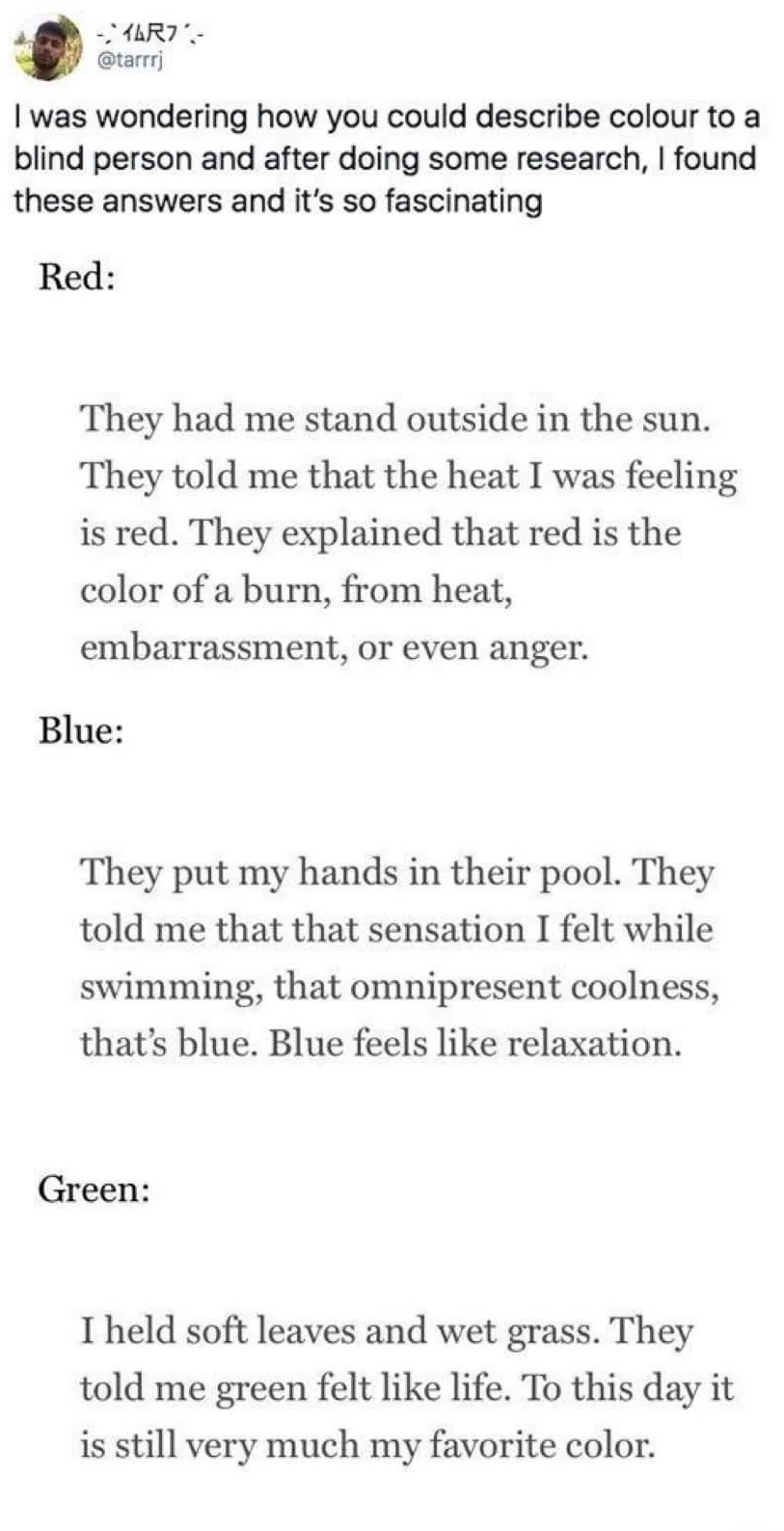
Media
- Listen to the story from Studio 360 on synesthesia.
- A story from the radio program Invisibilia, on a type of synesthesia is available here.
Goals
- Learn how to import designs and drawings into the computer for further manipulation.
- Demonstrate an understanding of the language of visual art, (expressive abilities of line, color, shape, texture...).
- Familiarize oneself with the tools and layout of Photoshop.
- Learn how to work in the Apple environment: computer care, the OS, file saving.
- Develop digital image creation and editing skills
- Learn basic vocabulary of computer imaging
Requirements for Prelimary Drawings
Each student will make at least 9 drawings.- Make three drawings for Must Use 1.
- Make three drawings for Must Use 2.
- Make three drawings for one of the other songs, (your choice).
- Each drawing must be a least 4 x 6 inches, (or bigger) on unlined paper. Your drawings may be in a proportion other than 4 x 6, for example, they may be 5 x 5 inches or bigger.
- Each drawing must be in color. You may use pastels, markers, ink, colored pencils, paint, etc.
- Background must be considered. Do not leave the background white. Consider pale pale yellow, light blue, a gradient that goes from grey to pale green. There are so many options available that are light in value that are not white. White works great for a highlight or an accent, but it tends to lose the viewers' interest when applied liberally. It can also be quite sterile and none of these pieces of music sound sterile.
- Label each drawing as to which song it is. Labelling the drawings on the back may be helpful to allow the viewer to interpret the drawing without bias.
Requirements for Finished Works
- Each image must be a least 1800 pixels in both dimension (wide or tall)
- Images will be viewed on screen at 100% for critique
- Images will be created in Photoshop
- NO recognizable imagery is acceptable. The image must be 100% abstract, (no words, no photos, no horses, or and for the love of all things holy, no cats!)
- At least one part of your artwork must originate in some form outside the computer and be scanned in or otherwise imported into the computer for further manipulation, (a painting, a sculpture, a weaving, a drawing you created must be imported)
- No part of your design may be made by anyone other than you. Nothing by your roommate, neighbor nor any form of artificial intelligence.
Project Materials
- USB drive.
- Colored pencils or markers, graphite pencils, pencil sharpener, eraser
- 8 x 10 blank unlined paper or sketchbook
- musical fragments, (provided by instructor)
- Photoshop Tutorial
Grade Rubric
- 20% quality and meeting the requirements for preliminary drawings
- 10% participation in critique and discussion
- 40% meeting the requirements for this finished works and demonstration of art and design principles to create a whole unified and engaging artwork
- 30% communication of the essence of specific musical selection
Research and for further thought
Below is a list of artists who make abstract art. Many may be of interest and inspiration. We have books on all of these artists in the University library.- Wassily Kandinsky
- Helen Frankenthaler
- Joan Miro
- Gerhard Richter
- Sigmar Polke
- Jackson Pollock
- Frank Auerbach
- Nancy Graves
Cell phones may not be used during class. CELL PHONES MUST BE TURNED OFF during class.
Timeline
- August 29th Quiz on syllabus. Bring headphones. Show progress on drawings
- September 3rd, Show nine well-developed color drawings to Professor Bronner (also these must be turned into Brightspace before 9am)
Complete 2.5 hours of Photoshop tutorials and come to class with questions. - September 5th, Demonstrate one new skill in Photoshop for the class.
- September 10th, Critique for one of the three images, (songs)
- September 12th, Critique of the other two images, (songs). First image may also be revised and resubmitted on this date.
Inspiration
